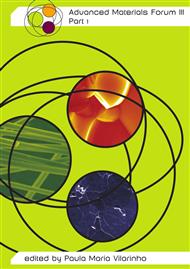p.915
p.920
p.925
p.930
p.935
p.940
p.945
p.951
p.956
Space Charge Studies in XLPE from Power Cables Using Combined Isothermal and Thermostimulated Current Measurements
Abstract:
Cross-linked polyethylene (XLPE) peelings from aged power cables from three different sources were studied using a combined procedure of isothermal and thermo-stimulated current measurements. Different parameters, such as electric field, temperature, charging/discharging times, can be selected in order to make an analysis of the space charge characteristics (such as, relaxation times and activation energies). Three different cables peelings were analyzed: A – electrically aged in the laboratory at high temperature, B – service aged for 18 years and C – thermally aged in the laboratory at high temperature. The results were compared for the different types of samples and also with previous results on laboratory aged and produced films of low-density polyethylene (LDPE) and XLPE.
Info:
Periodical:
Pages:
935-939
Citation:
Online since:
May 2006
Keywords:
Price:
Сopyright:
© 2006 Trans Tech Publications Ltd. All Rights Reserved
Share:
Citation:


